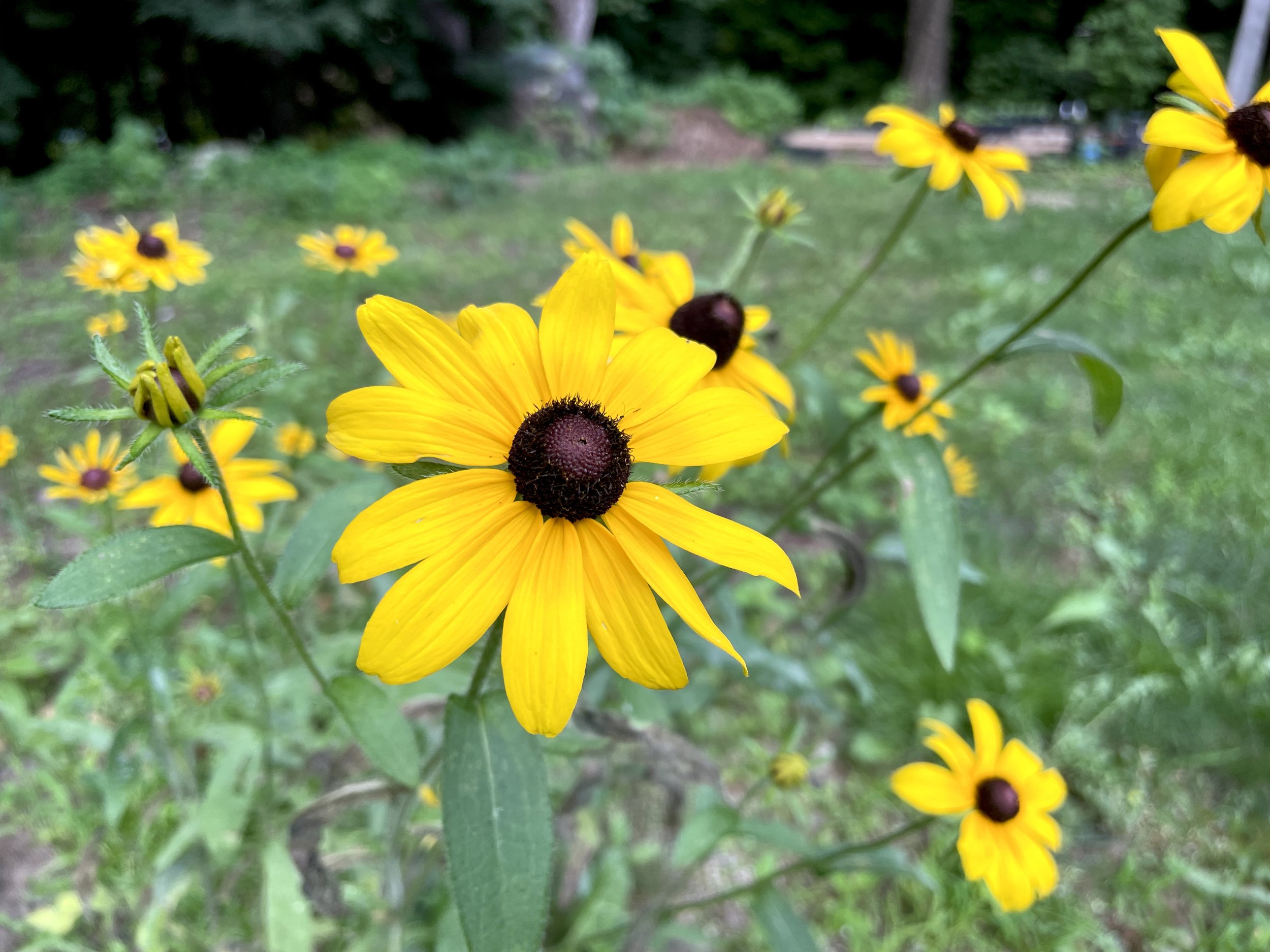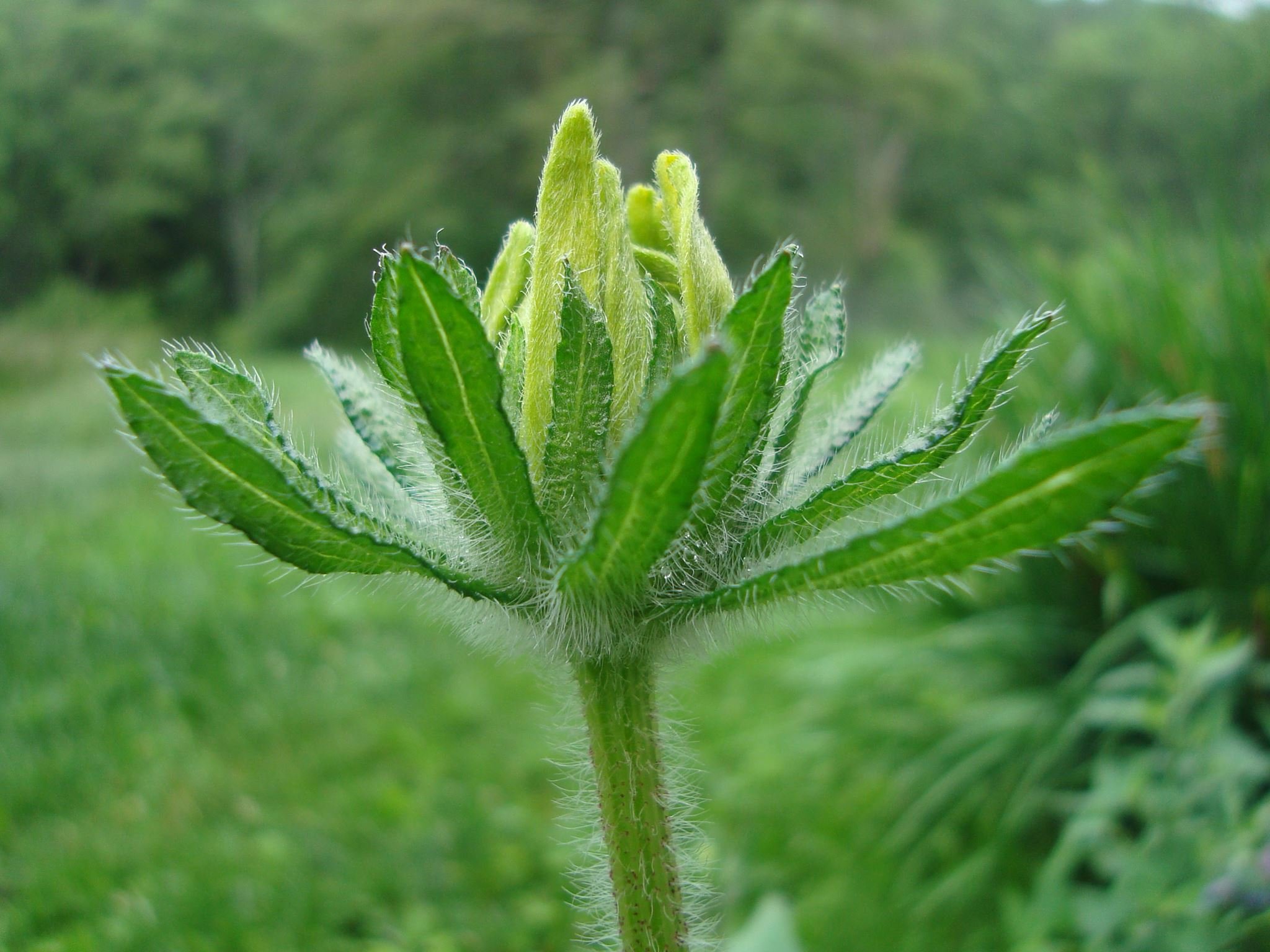
Black-eyed coneflower
Rudbeckia hirta
-
About
Prefers full to part sun and medium to dry soils. Typically grows up to 2’ tall and blooms from July to October.
The classic pioneer species in new native plantings; they come in strong in the early years but then succumb to longer-lived perennial plants. They are prolific self-seeders, so they’ll appear in the garden for years to come. - Prairie Moon Nursery
-
Ecological importance
One of the larval host plants of the Silvery Checkerspot. Its bright yellow flowers attract many different butterflies, moths, and bees. This plant is of high value to pollinators. - Prairie Moon Nursery
Birds enjoy the seeds in late fall.
Thrives in poor, dry soils. A good urban plant for sunny dry locations. - Wild Seed Project
-
Why Courtney loves it
I find Rudbeckia hirta one of the easiest plants to identify because it pops up anywhere. If mowing I always avoid the hairy lance-shaped leaves when I see them and get treated to a beautiful, bright yellow display come summer. I have a particular fondness for naturalizing wildflowers, that just refuse to be contained in one spot!

